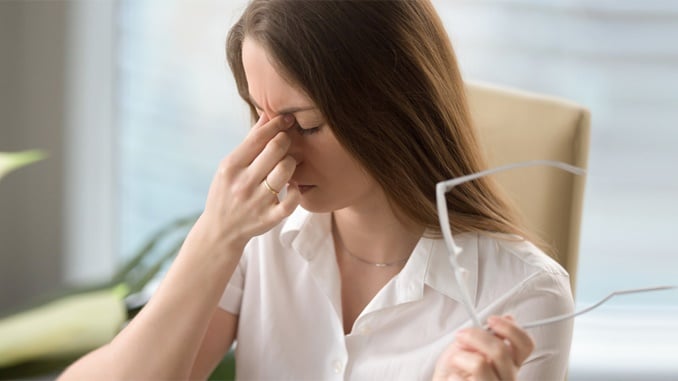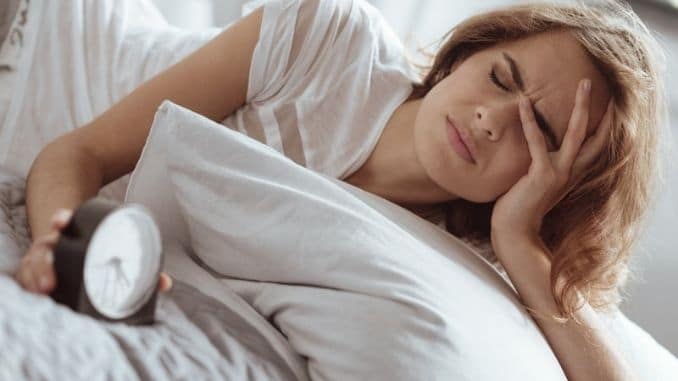
What causes headache pain? If you’ve ever suffered from a headache, you might have wondered about the common causes of headaches and how to prevent them from happening again. Headaches can stem from various triggers like stress, dehydration, poor posture, or underlying conditions such as tension, sinus issues, or migraines. Understanding these triggers can help you manage and potentially avoid future headache episodes.
The World Health Organization says that headaches are among the most common disorders of the nervous system, affecting around half of the adult population across the globe. Headaches are a problem for people of every income level, ethnicity, age, and geographic location. As common as headaches are, the causes aren’t widely known.

After a good amount of research, we have deduced 13 common causes of headache pain. These may help you identify the cause of your headache and prevent a recurrence.
1. Hormones
Women generally experience a drop in their estrogen hormone levels just before their monthly period begins. This hormonal shift is often the cause of headache pain or migraines in women. At the end of menstruation, there are further hormone changes that can trigger a headache.
Other hormonal changes can cause headaches as well. Preteens, both male and female are susceptible to headaches before, during and after puberty when hormones are changing rapidly. Women approaching menopause and men experiencing drops in testosterone levels also commonly suffer from hormonal headaches.
2. Stress, Anxiety & Depression
Tension headaches are often caused by extreme stress, anxiety or depression. Stress | 404 can induce a headache due to the repeated tight muscle contractions in the neck and head.
According to the National Headache Foundation, a headache from depression or anxiety consists of a steady ache, often described as occurring in a band-like pattern of pressure all around the head.

3. Not Getting Enough Sleep
Scientists at Missouri State University have done research on mice and found that sleep deprivation caused an increase in the body’s production of certain proteins that trigger migraines.
The American Headache Society published an additional study on the connection between children who don’t get enough sleep and headaches. They found that sleep disturbances were much more common in children who suffered from tension headaches. When we don’t get enough sleep at night, we’re more likely to have a headache the next day.
4. Certain Foods
Food is a common cause of headaches and migraines | 404. In fact, it is estimated that 25 percent of headaches are triggered by a substance in food called tyramine. Tyramine occurs naturally in plant and animal foods. It can particularly cause problems for people taking anti-depressant medications in the monoamine oxidase inhibitor (MAOI) category.
The National Headache Foundation put out a list of high-tyramine foods that may cause headaches. Here are some foods and food additives that made their list:
- Chocolate
- Ripened cheese, like Stilton, brie and aged cheddar
- Pickled herring
- Fermented foods
- Nuts and nut butter
- Sourdough bread
- Sausages, cold cuts, hot dogs and other processed meats
- Monosodium glutamate (MSG)
- Aspartame
People taking MAOI medications should be especially careful to avoid consuming large amounts of the above foods. MAOIs block the body’s ability to process the tyramine in these foods. However, even folks who don’t take MAOIs should avoid overeating foods that are high in tyramine. A diet extremely high in tyramine can bring about headaches and migraines.

5. Alcohol
According to The National Headache Foundation, ethanol, which is the chemical that’s in alcoholic beverages, can cause headaches in several ways. “First, it is a direct vasodilator; in some individuals, vasodilation may cause a headache. Second, ethanol is a natural diuretic; this leads to excretion of salt, vitamins, and minerals from the body through the kidneys.”
Some people are very sensitive to even small amounts of alcohol and may experience headache pain directly after consuming alcohol or the following morning. Most hangovers are caused by the vasodilation due to ethanol and the diuretic effect.
6. Low Blood Sugar
Low blood sugar, also called hypoglycemia, can cause headaches and migraines. According to Dr. Claudia Chaves, “Headaches from hypoglycemia are usually described as a dull, throbbing feeling in the temples.” Often, they are remedied quickly by eating a balanced meal. However, skipping meals, drinking too much caffeine — caffeine promotes insulin production, which lowers blood sugar — or the blood sugar crash after consuming a large number of sweets can trigger a headache.
7. Dehydration
Often overlooked, dehydration is one of the more common causes of headaches. Dr. Colleen Doherty wrote about dehydration headaches in an article for VeryWell. She said that dehydration is a common cause of tension headaches. One symptom of a dehydration headache is an increase in pain when you move your head. Dr. Doherty added, “It’s not entirely clear why dehydration causes a headache. Some studies have shown that blood vessels in the head may narrow in an attempt to regulate body fluid levels. Because this would make it harder for oxygen and blood to get to the brain, a headache results.”
Dehydration headaches are easy to avoid by making sure you’re getting eight glasses of water a day — and more when you’re exercising or spending time outside in the heat.
8. Overexerting Yourself During Exercise
Intense and strenuous physical exercise can cause a type of headache called an exertion headache. Exertion headaches are induced by training at a high level of intensity.
According to Certified Strength and Conditioning Specialist Nick Ryan, exertion headaches can occur as a result of a combination of circumstances. Dehydration, paired with holding your breath or poor neck position during an intense workout, combined with a blood pressure spike due to lifting heavy weights can cause an exertion headache.
Exertion headaches can be very intense at first and then move into a dull headache gradually that can last for several days. With good rest and hydration, you can be back to the gym within a week. However, these headaches can set athletes back in their training quite a bit. It’s important to get checked out by a physician after experiencing an exertion headache.

9. Eye Strain & Vision Problems
Your vision can cause headaches in a number of ways. Eye strain is common when reading on small screens and using a computer often. Texting and reading screens can cause you to overuse the muscles that help you focus, which often results in a headache.
Undiagnosed farsightedness can also cause headaches. Focusing harder to see objects far away can cause headaches in the front of the head or brow area.
For people age 40 and older, a condition called presbyopia generally occurs. Presbyopia causes us to have a hard time focusing on nearby objects. Reading words close-up is difficult, and the words often look blurry. Presbyopia can cause headaches when we try to focus or overcompensate to see better.
10. Bright or Fluorescent Lights
Fluorescent lighting is one of the common causes of headaches, particularly for those who spend long hours in office buildings, stores, or warehouses. These lights often flicker subtly, which can mimic the visual disturbances that precede a migraine.
Additionally, people who are sensitive to bright or fluorescent lights may experience heightened restlessness, stress, or discomfort, which can trigger headache symptoms. If you’re prone to headaches, it’s important to minimize exposure to these lights or consider using softer lighting options when possible.
11. Overuse of Anti-inflammatory Medicine
A medication overuse headache (MOH) is caused by using over-the-counter (OTC) anti-inflammatory medicines too much. People at risk for MOH are those who use analgesics more than two or three times a week. Often, people who suffer from MOH use OTC pain relievers more than 15 times per month.
MOH is generally a daily or almost-daily occurring headache. It is normally present first thing in the morning upon waking. It will improve after taking an analgesic medication but return just when the medicine wears off.

12. Poor Posture
Your head is balanced on your cervical spine, or neck, with a collection of muscles, tendons and ligaments. If you have poor posture or alignment, you can suffer headaches. When the head is tilted forward, and the shoulders are rounded, there is an imbalance between the chest and front shoulder muscles and the shoulder blades in the back. The imbalance causes stress on the neck and spine, making it difficult for the spine to hold the head up properly, leading to headaches.
13. Sinus Pressure & Seasonal Allergies
Nasal and sinus congestion from allergies or a sinus infection can cause headaches. With a sinus headache, people experience pain and pressure throughout the sinus area and through the face rather than just in the head. Sinus headaches can be on just one side or both and normally include throbbing pain.
Knowing the Cause May Help
Some headache sufferers keep a headache diary to help them discern the cause for their pain. They write down foods they eat, how much sleep they logged, whether they have taken medication and the like. Then, they chart their headaches and try to connect the dots to discover the causes. Knowing what’s causing your headache is the first step to preventing future pain. Pay attention to your body to find out if one of these 13 headache causes may be responsible for your headaches.
For your guide to relieving migraines through yoga, check out 10 Gentle Yoga Poses for Migraine Relief, here!

